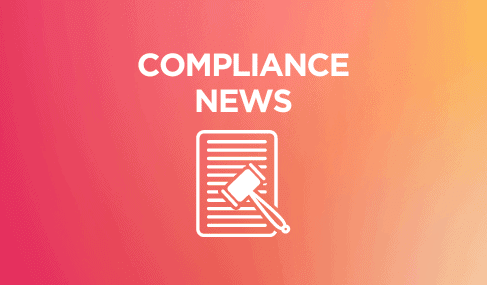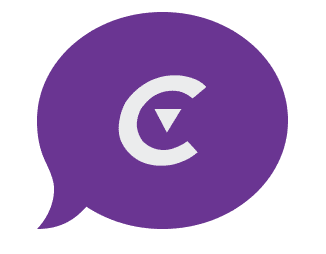
Compliance expert and leading attorney, Michele Shuster of Ohio-based firm Mac Murray & Shuster, sat down with Convoso Product Marketing Director, Tyler Hinton, to help marketing and sales teams get up to speed on all the latest developments in the world of compliance.
During a packed one-hour session, the pair covered a wide range of topics, including the issue that’s on nearly everyone’s mind these days: the FCC’s proposed rules on robotexting and lead generation practices. Read up on the need-to-know highlights in the recap below.
Watch the complete webinar Ahead of the Curve with Shuster: The Compliance Quarterly Update (Q1 2023)
3 Hot-Button Issues Under Consideration by the FCC
With an eye-catching agenda at its March Open Meeting, the FCC loomed large in Hinton and Shuster’s chat. Here’s everything you need to know about the three key rule changes they discussed.
1. Clarifying Texts’ Place in the TCPA
The FCC has always had jurisdiction over calls as well as SMS. The agency already enforces National DNC laws with regard to text messages. But with a new rule, the FCC has proposed (and since voted to adopt during its March meeting) a clarification of provisions contained within the TCPA. While courts have already held a number of times that texts are enforceable under the TCPA, Shuster says the FCC is taking a step to effectively say “this is what we meant in the TCPA when it comes to text messages.”
Of the things that were up for discussion at the March meeting, this was probably the least impactful that Shuster covered. “For folks in the industry, I think they’re already complying with these types of things,” said Shuster. “I don’t think this is a huge change, but it does signal that the FCC is becoming very active.”
2. Report and Order on Spam Texts
Back when the FCC started its ongoing campaign against illegal robocalls, it enabled voice providers to automatically block calls claiming to come from a so-called Do Not Originate (DNO) list. This list consists of specific types of phone numbers that would never make a call for various reasons.
With a newly passed Report and Order, the FCC will implement a similar approach for robotexting. As with call blocking, providers will be obligated to designate a single point of contact for receiving and addressing complaints about incorrect blocking.
Just as we’ve seen with the enforcement of blocking and flagging for calls in the wake of STIR/SHAKEN, this rule has the potential to disrupt legitimate businesses’ texts to consenting consumers.
“The phone numbers that are unallocated or are inbound-only—those types of things are easy [to regulate]. But once it gets beyond that, it gets much more complicated, and so I think there really needs to be some clarity about what the FCC means when they’re talking about messages that are ‘highly likely’ to be illegal,” said Shuster.
3. Closing the Lead Gen Loophole: The Notice of Proposed Rulemaking
Long before the recent release of newly proposed rules, regulators have made clear that lead gen consent-gathering practices were under their microscope. As Shuster told us back in January, the FTC’s stated position was that lead generators cannot get consent for multiple parties with a single lead form—let alone for hyperlinked lists of hundreds or thousands of marketing partners.
With its additional Notice of Proposed Rulemaking (NPRM), the FCC has made clear that it thinks along similar lines. In an attempt to close the so-called “lead generator loophole,” the NPRM currently under consideration contains a number of questions about lead gen forms and things that they believe need to be included in any form. As a result, the two buzzwords that have been on everyone’s mind are “logically and topically related.” That’s because, Shuster told Hinton, under the new rules sellers could only generate leads for those partners that are logically and topically related to their own business.
Also under threat is the common practice of including hyperlinked marketing partners on consent forms. Under the new rules, every seller would have to be included on the actual lead gen page, says Shuster.
“Based on what the FCC proposed, all of those sellers must be listed on the same page. And like I said they have to be logically and topically related. So, it makes it very difficult to do the type of lead generation that’s used now with marketing partners. It’s the big takeaway from what the FCC is doing. What we’re hearing from other regulators is that that form of lead generation is [going to be] short-lived.”
Where Things Stand After the March 16 FCC Meeting
During the FCC’s March Open Meeting, the rules concerning the enforcement of robotexting, the Do Not Originate List, and the protocols for the blocking of text messages all passed. Once these items are filed in the Federal Register (a process that typically takes several weeks), the rules will take effect within 30 days.
The closely watched NPRM on lead generation is currently in a different stage of the process. After being discussed during the March 16 meeting, the NPRM’s contents will also be published in the Federal Register. Its publication in the Register will open a 30-day window, during which industry members are encouraged to submit comments on the proposed measures. After this, there will be another 30-day window for reply comments.
As Shuster explained during the webinar, the comments received during this period will set in motion the Commission’s deliberation on the rules: “We will eventually see a repeat of what we just saw with the text message Report and Order. They will have to release the rule to the public, usually as part of an agenda for an Open Meeting, and then they would vote on it during the Open Meeting. I suspect that that won’t happen any earlier than late this year—sometime in the end of fall or beginning of winter—if it does happen. Once that rule is passed, it will go into effect.
“This is something that the industry has to start working on, and we have to start finding ways to generate leads that get consumers the information they want and get them to the sellers that want in a way that is also going to meet what these regulators are proposing.”
Watch the Webinar and Hear About More of Today’s Compliance Issues
While the matters at the FCC dominated Hinton and Shuster’s conversation, they also covered quite a lot of other ground. Tune into the complete webinar to hear Shuster’s thoughts on:
- Potential updates to Medicare lead generation rules coming from the Center for Medicare & Medicaid Services
- What the Supreme Court will consider in a case about the constitutionality of the Consumer Finance Protection Bureau
- The latest action unfolding at the state level, including a new Georgia bill
Missed this one but interested in joining the rest of the series? RSVP here!
Watch Michele’s promo for the series:
Want to stay up to date on compliance every month? Get a recap of the latest contact center compliance news delivered monthly to your inbox. Subscribe here >
DISCLAIMER: The information on this page and related links is provided for general education purposes only and is not legal advice. Convoso does not guarantee the accuracy or appropriateness of this information to your situation. You are solely responsible for using Convoso’s services in a legally compliant way and should consult your legal counsel for compliance advice. Any quotes are solely the views of the quoted person and do not necessarily reflect the views or opinions of Convoso.
